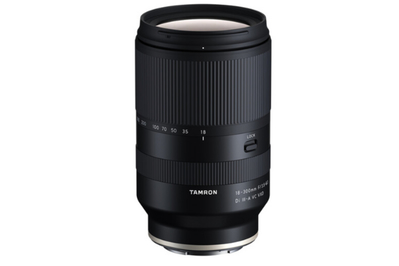The Best Nikon Z-Mount Mirrorless Lenses You Should Buy First

A superzoom lens is rarely the best option — these do-it-all optics often sacrifice sharpness, distortion control, and a wider maximum aperture in exchange for sheer range. But if you want to carry only a single lens on trips and don’t mind the downsides (poor light-gathering ability indoors or on cloudy days, less blurry backgrounds, and so on), they can be a good choice.
The Nikon Nikkor Z 28–400mm f/4–8 VR outperforms the reputation of most superzoom lenses with very good sharpness, beautiful colors, and effective image stabilization. It’s capable of capturing everything from wide-open landscapes to portraits and even sports or wildlife.
If you’re willing to live with its few shortcomings, that versatility makes it a great companion for backpacking trips, a day out with the family, or anything else that life might throw at you.
Its image quality is surprisingly good. You won’t mistake the images coming out of this lens for shots you’d get from some of Nikon’s S-line lenses, but as consumer zoom lenses go, the 28–400mm f/4–8 VR stands at the head of the pack. Sharpness is high, especially in the center, and background blur is smooth even at longer focal lengths and f/8. Images are contrasty, and colors are vibrant.
It has a small maximum aperture, but VR mostly makes up for that. This lens’s maximum aperture starts at f/4 at 28mm and jumps all the way to f/8 by 200mm. With less light coming in due to the restricted aperture, you need more ambient light to freeze action and get clear shots.
On a lens without optical image stabilization, that would mean using higher ISO settings and getting more image noise as a result, but Nikon’s Vibration Reduction (VR) provides 5 stops of stabilization, which should allow your camera to shoot at slower shutter speeds without blur from hand shake. If your camera supports Synchro VR, the collaboration between lens and body VR pushes that to 5.5 stops.
But even with that benefit, this is not a lens that’s great for indoor or nighttime photography. VR might prevent blur from your hands moving, but it can’t help to stop the motion of the people or objects you’re capturing. Only a faster shutter speed can do that.
It’s weather-sealed, despite not being an S-line model. Dust and water protection is a feature that Nikon typically reserves for its high-end lenses, but the company wisely included it on this go-anywhere, do-anything lens. The 28–400mm f/4–8 VR features seals around the moving parts of the lens barrel, as well as the lens mount, providing some protection against inclement weather.
Despite its range, it’s relatively small and lightweight. One of the benefits of this lens’s smaller maximum aperture is that it’s compact and lighter than you may expect. The 28–400mm f/4–8 VR measures just 5.6 inches long when retracted for storage, and it weighs 725 grams — slightly less than the 795 grams of our 70–180mm f/2.8 telephoto zoom pick, which covers a lot less ground.

The Tamron 18–300mm f/3.5–6.3 Di III-A VC VXD provides even more zoom range than our full-frame pick — it covers 27–450mm in full-frame terms — and its overall image quality is nearly as good. That comes as no surprise, since it’s our pick for a Fujifilm X-mount superzoom, and it may perform even better on Nikon’s less-demanding 20-megapixel APS-C sensor.
It’s very sharp at the wide end, and it drops off only a bit as you zoom in. Image quality is very good throughout the range, though the 18–300mm f/3.5-6.3 Di III-A VC VXD performs better overall at wider focal lengths than it does at extreme telephoto. That said, no other sub-$1,000 lens available for Nikon Z-mount lets you shoot at a 450mm-effective focal length with this level of image quality.
We saw relatively heavy vignetting and some slightly busy bokeh at 300mm with this lens, but you can correct the former with editing software, and the latter isn’t enough to bother most people.
It’s impressively versatile. Just walking around the Santa Fe Plaza, we were able to capture a huge range of subjects with this lens, including architecture, portraits, cars, flowers, crowd scenes, and more.
While the f/3.5–6.3 aperture range isn’t wide by prime lens standards, it still allows for impressive bokeh and subject-background separation, especially given this lens’s unusually short minimum focusing distances. At 18mm, it can focus down to just 5.9 inches from the sensor, while at 300mm it can lock on to subjects as little as 39 inches away.
Autofocus is quick and confident. We expect a high level of performance from autofocus lenses on Z-mount, and this Tamron lens delivers in that regard. We found focus to be reliably fast, accurate, and sticky when shooting in the Z50 II’s 3D tracking mode, which made it easy for us to capture sharp human faces, birds, and more — even when we were aiming quite a long distance from our subject.
Image stabilization is effective, if occasionally jerky. Nikon’s APS-C Z-mount cameras, like the Z 50II we tested this lens with, lack in-body image stabilization. That means they have to rely on lens-based optical stabilization, which the Tamron 18–300mm f/3.5–6.3 offers.
In our experience, this lens’s optical stabilization was extremely effective, though seeing it kick in through the viewfinder could be jarring. When it activates, you see the live preview freeze in place and then jerk slightly as you pan around a scene. But this is merely a side effect of the way stabilization works, and as long as the results are sharp, we doubt most people will mind.
It’s a great value. At its $630 launch price, the 18–300mm f/3.5–6.3 Di III-A VC VXD is a significant bargain. Few superzooms we’ve ever used offer this kind of consistently high image quality throughout their range. And unlike many superzooms, this one is pretty light and compact at 1.4 pounds and just 5.9 inches long when collapsed for travel.







